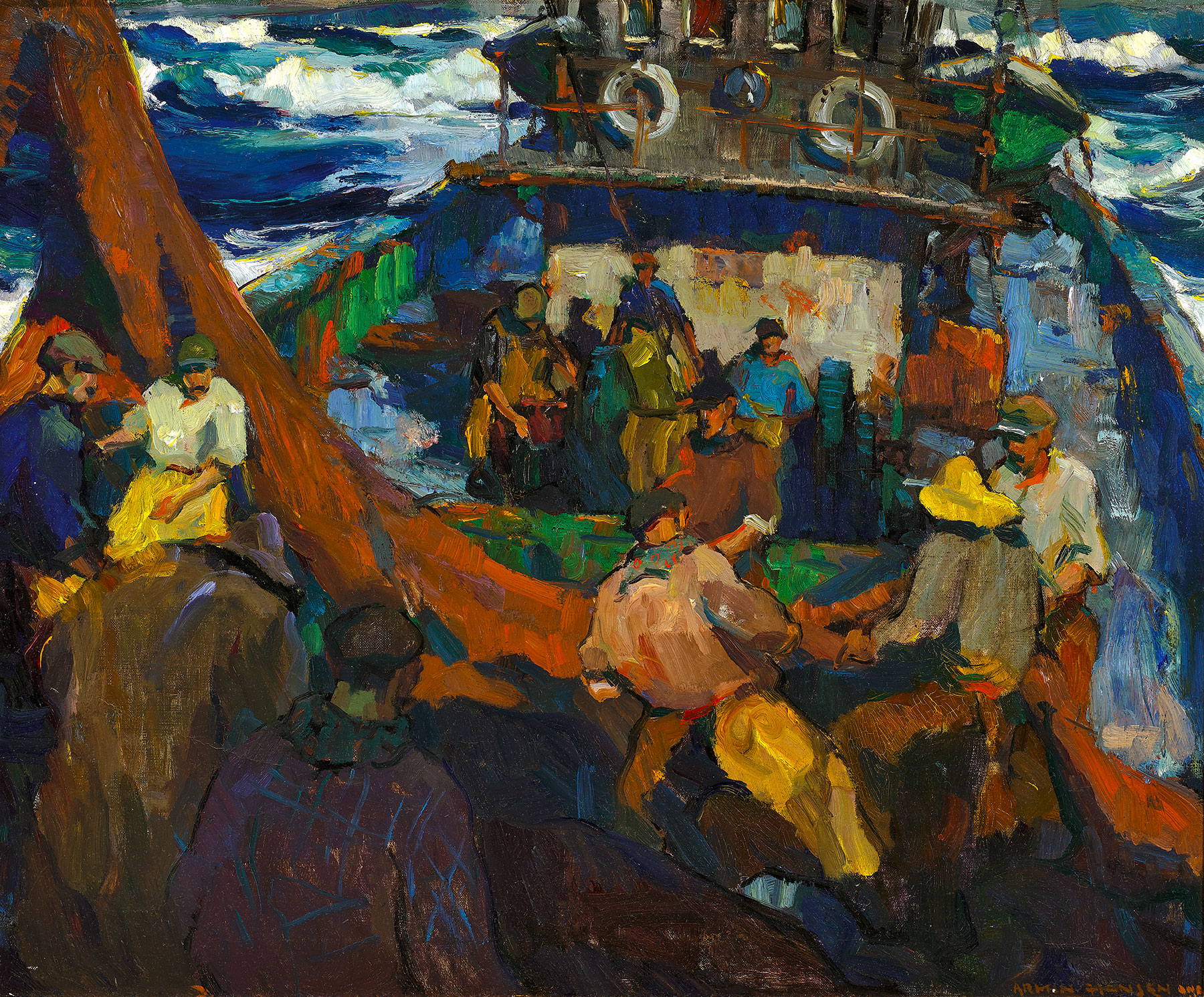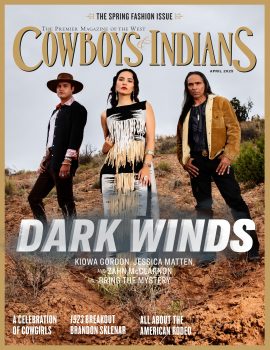From the saddle to the sea, San Francisco artist Armin Hansen saw the power and authenticity in both.
A life on horseback and a life at sea might not seem to have much in common, but Armin Hansen saw the power and authenticity in both and was as convincing painting a crusty sailor negotiating a swell as he was painting a veteran cowboy busting a bronc.
Born in 1886, the San Francisco native was known for his marine canvases, but rodeo also held visual sway for him. “His first love was the sea. He said he wanted to go out to sea, and painting it allowed him to combine both his loves,” says Scott A. Shields, chief curator at the Crocker Art Museum and curator of the exhibition Armin Hansen: The Artful Voyage. “But Hansen also loved rodeo — the sheer dynamism and color of it. Painting a horse in the air with dust flying, there’s a lot to capture. In both cases — rodeo and fishing — people are working in close communion with nature.”
Hansen was literally built for that kind of subject matter. At 6-foot-4 and 253 pounds, with huge hands, he painted subjects in keeping with his impressive physicality. “Someone once said that it was like a blast of salt air had come off the Pacific when he entered a room,” Shields says. Hansen’s powerful physique matched both his subject matter and technique. “Bolder was the order of the day. Occasionally he’d bring some refinement to his marine paintings, but the critics didn’t like those pieces as much, though they approved when he was painting a more delicate still-life subject.”
Hansen heeded the critics and was necessarily pragmatic. “In the ’20s he was doing really well; then in 1929 he lost everything in the crash and suddenly had no money. During the Depression you see him starting to diversify his subjects — still life, mural, rodeo, portraiture — anything and everything to make ends meet.”
Rodeo was a popular subject in the day, but Hansen had gravitated to it well before. His father, Herman Hansen, was a famous painter of the mythic West (his well-known works include the much-reproduced Pony Express).
“Hansen learned a lot from his father, who would give him exercises and drawings to do every day,” Shields says. “He remembered going to the rodeo with his dad and said he thought the rodeo subjects came from his father. In 1913, he was taken by a friend to [California Rodeo Salinas] — that was really when it came back into his consciousness.”
His father’s example would also be instructive in another way. “Herman Hansen did very well as an artist and was respected — especially around the turn of the century. But people started to say that while he was a skilled technician and history painter, he lacked something artistically,” Shields says. “Armin didn’t want the same criticisms leveled at him, so you see him being careful to combine narrative with art and his work becoming more about color, brushwork, and application of paint.”

Throughout his work, there’s an undeniable virility. “Virile is the perfect word, and it’s used a lot in connection with him,” Shields says. “Having works that were virile was considered the highest praise.” The muscular artistry with which Hansen renders the strength and manliness of a fisherman riding the waves animates the cowboy paintings as well. There’s strength, too, in how he conveys so much with such gestural economy. Shields finds it remarkable that Hansen could capture so much with so little. “Sometimes there are just suggestions of objects or people — a whole cowboy might be four brushstrokes and the dust being kicked up obscures things. Western paintings that precede Armin Hansen are not so painterly.”
In the end, Shields says, his style defies labels. Hansen, like the heroic fishermen and cowboys he loved to paint, approached his work bravely, willing to express himself through everything from impressionism to postimpressionism, and, near the end of his life, some elements of abstract expressionism. There were even elements of American scene painting. He was also a highly respected etcher, a skill he taught his aging father (on a national level, he was, in fact, known more for his etchings than his paintings).
Hansen faced his own advancing years head-on artistically. “When a painter like myself paints for a long time and gets a certain amount of recognition,” he once said, “he soon begins to feel that he has arrived and that he knows it all. Then all of a sudden something comes along that he knows nothing about, and he gets knocked off his high-horse and has to start thinking. This abstract painting keeps me thinking and it’s wonderful.”
He continued to paint boldly in his longtime home of Monterey, where he remained immersed in the romance of the sea until his death in 1957.
Armin Hansen: The Artful Voyage is on view through March 7 at Monterey Museum of Art in Monterey, California. From the January 2016 issue.














